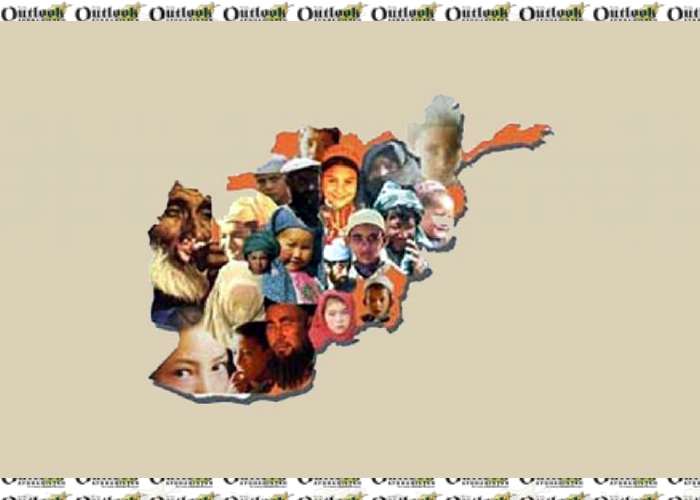We often talk about Pakistani drivers driving “on the wrong side” of the road. Why not just say “opposite side” or “left hand side”? Or we talk about written English as reading “backward.” Why not just say “from left to right” or “in the opposite direction from Dari.”
Ethnocentrism is the tendency to believe that one’s ethnic or cultural group is centrally important, and that all other groups are measured in relation to one’s own. The ethnocentric individual will judge other groups relative to his or her own particular ethnic group or culture, especially with concern to language, behavior, customs and religion. These ethnic distinctions and sub-divisions serve to define each ethnicity’s unique cultural identity.
The American sociologist William Graham Sumner coined the term ethnocentrism in the early 20th century upon observing the tendency for people to differentiate between the in-groups and others. He described it as often leading to pride, vanity, beliefs of one’s own group’s superiority, and contempt of outsiders.
Culture shock can be an excellent lesson in relative values and in understanding human differences. The reason culture shock occurs is that we are not prepared for these differences. Because of the way we are taught our culture, we are all ethnocentric. This term comes from the Greek root ethnos, meaning a people or group. Thus, it refers to the fact that our outlook or world view is centered on our own way of life.
To know better, let’s see a simple example of ethnocentrism in English term barbarian. Originally a Greek word, the term was used to refer to tribes that lived around the edge of ancient Greek society. The Greeks referred to these people as barbars because they could not understand their speech. Bar-bar was the Greek word for the sound a dog makes, like the word bow-wow. The Greeks, in a classic example of ethnocentrism, considered those whose speech they could not understand to be on the same level as dogs, which also could not be understood. They did not grant such people the status of human being. Moreover, the term eskimo, used to refer to groups that inhabit the arctic and subarctic regions, is an Indian word used by neighbors of the Eskimos who observed their strange way of life but did not share it. The term means “eaters of raw flesh,” and as such is an ethnocentric observation about cultural practices that were normal to one group and repulsive to another.
One of the most well-known and the most horrible examples of ethnocentrism to ever occur was during Nazi Germany. Adolf Hitler decided that he hated Jews, as well as some other groups of people, and had many innocent people slaughtered in concentration camps. They did not deserve the torture that they received, and this was clearly an extreme case of ethnocentrism. While prejudice certainly leads to problems, very rarely in history has ethnocentrism led to the mass slaughter of millions of innocent people.
As cultural relativism and ethnocentrism are the two flip sides of one coin, it is necessary to know cultural relativism as well. There is a good definition for cultural relativism: “The concept of understanding different cultures and respecting their own beliefs.” In other words, cultural relativism is the notion which allows you to see the different habits, traits and values of an individual in the relevance of his or her cultural values. All the nations come up with their specific sects of cultural and ethnic values and norms. Moreover, all such cultural values differ from one ethnic group or nationality to the other. Cultural relativism grants that cushion where no culture gets to be termed as superior or inferior one. All the values, norms and traits get to be seen in the cultural relevance where it being understood that one values appropriate for one specific culture can be appropriate for the other. So, this very notion does not propagate becoming judgmental or harsh towards any specific cultural values and norms. Therefore, cultural relativism is considered to be more constructive and positive conception as compared to ethnocentrism.
In Afghanistan throughout the history, ethnic minorities have suffered harsh violence and sustained heavy casualties simply for belonging to certain ethnicity. In other words, ethnocentric views led to racial tensions and, finally, to civil war which resulted in the deaths of thousands of innocent people. Moreover, thousands were displaced and many others emigrated from their homelands.
Taliban was one of the terrible examples of ethnocentric group in Afghanistan, killing people on the basis of their ethnicity. The group killed scores of innocent individuals from certain ethnic minorities including women and children. They expressed strong prejudice, especially against ethnic and religious minorities, through violence, cruelty and killing.
Ethnocentric approach has been one of the most dreadful political blunders in Afghanistan. Unfortunately, there are still people who foment ethnicity and racism in the country. It is highly surprising to one that why they do not learn from the history and how long should Afghan people be sacrificed for their race and ethnicity? Afghans have suffered severely and this political blunder must not be repeated any more. Meanwhile, we have enough challenges in the country and our responsibility is to tackle those problems.
Home » Opinion » Ethnocentric Approach Highly Harmful and Destructive
Ethnocentric Approach Highly Harmful and Destructive
| Hujjatullah Zia

